Beijing is known for many things. The Great Wall, The Forbidden City, and Tiananmen Square speak volumes about the culture and heritage of the city. However, the city tends to keep a lot of treasures hidden under the surface, and the dynamically rich culture of the city is seldom spoken of, which makes it even more appealing. The local secrets, such as hidden gems and cultural tendencies, give insight into Beijing’s true essence. Suppose you want to explore fantastic offbeat neighborhoods, unique local eateries, and serene parks or indulge in rich culture. In that case, this guide will take you on a breathtaking journey. Locals can rediscover their beloved city in an entirely new light. Get ready to venture beyond the well-trodden routes and unveil the heart of Beijing .
What are the best non-touristy attractions in Beijing worth exploring?
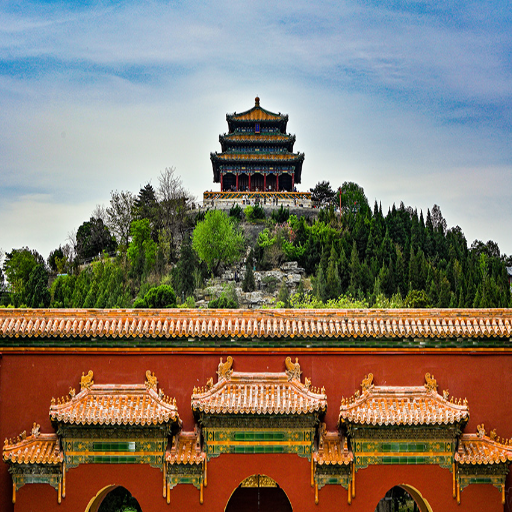
Find 798 Art District Beijing’s Artistic Crown Jewel
Contemporary art, dance, and cultural styles flourish in the 798 Art District, situated in the heart of Chaoyang district. In the 1950s, an array of abandoned factories were built, but this building has been transformed into a state-of-the-art facility filled with creativity. The preserved echoes of Bauhaus-style architecture shell these units, once industrial factories, and set the mood for advanced galleries and workshops for established and upcoming artists. All forms of art are welcomed, from experimental art installations to unconventional sculptures and photography.
Coupled with the art, trendy cafes, boutique shops, and performance places are always buzzing, which makes this area a melting point for cultural fusion. With events such as art fiestas and pop-up shows, this district has become a haven for performers and art lovers worldwide. Everyone gets to witness Beijing’s modern art structures alongside their centuries-old roots. Thus, this unique and diverse mix of visual art, design, and street culture adapts 798 Art District as zone number one for tourists willing to discover the premium face of China’s beating heart, Beijing.
Explore the real hutongs of Nanluoguxiang
As a historic gem of Beijing, it draws people to get lost in the cultural and architectural beauty of its network of narrow alleyways, known as hutongs. Its origins trace back to the Yuan dynasty; these alleys are managed with traditional gray-bricked courtyard houses, hallmarking the city’s pride. Currently, the area of Nanluoguxiang is full of life, as it has effortlessly incorporated new vitality alongside its historical foundation. Visitors can find local boutiques, street-side cafés, and vendors selling dishes such as local Jian bing or sugar-coated hawthorn sticks. The lively atmosphere is complemented by street performances alongside art displays, catering to the needs of those looking for modern yet traditional explorations. Both describing the alleys and getting lost in their layers, you will have a treat of modernity blended beautifully with the olden days.
Experience Jingshan Park for the best Forbidden City views.
Jingshan Park, an imperial garden turned into a city park, is located north of the city. While wandering around the park, you are offered boundless serenity and soothing views of The Forbidden City. Well known for providing the finest view of the Forbidden City, you can get the best views from Jingshan Hill, a beautifully sculptured mound built during the Ming Dynasty.
Jingshan Hill is the best spot to observe The Forbidden City, which is considered a symbol of China and exudes elegance as far as the eyes can see. Undoubtedly, The Wanchun Ting Pavillion offers the most magnificent views of the city. Apart from being the best place for nature lovers, Jingshan Park provides immense historical context. The surrounding parks and buildings display the imperial design. You can also enjoy many activities like Tai Chi and listening to live Chinese music, which is fused with the city’s reputation as the heart of China.
Where can I find unique cultural experiences in Beijing away from crowds?
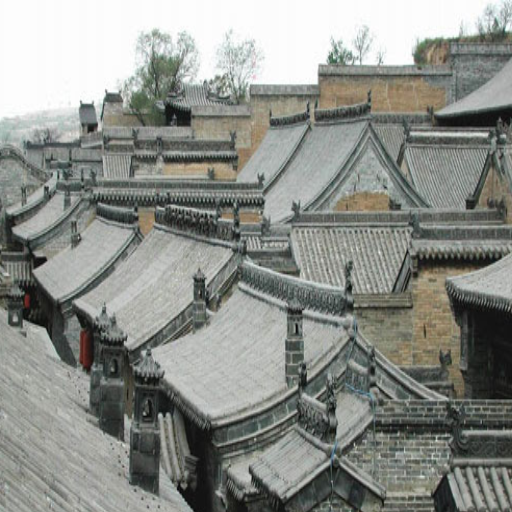
Go to Buddhist temples other than the Lama Temple.
If you want to experience the culture of Beijing on a whole new level, you can visit Buddhist temples that are less known and allow for peaceful meditation. Fayuan Temple is a quiet sanctuary that is located in the Xicheng District. This temple holds a lot of historical value as it is said to have been built during the Tang Dynasty. This temple, along with other features such as ancient stone carvings and beautiful courtyards filled with trees, is renowned for its exquisite architecture. Currently, it serves as a center for the Buddhist Academy of China.
Another remarkable temple is the Tanzhe Temple, located in the western part of the city. This temple is believed to have been constructed long before the city came into existence. It boasts century-old halls, spectacular pagodas, and Ginkgo trees that are aged a thousand years. The stunning environment and rich history blended together make it an amazing place to visit for those who are willing to explore China’s Buddhist identity.
Most Buddhist temples around Beijing aim to offer less crowded places for meditation and explore the essence of the history and culture that defines Beijing.
Visit Ming and Qing dynasty courtyard houses
“Siheyuan” refers to the “Ming and Qing” dynasty courtyard houses, embodying the excellence of Chinese architecture. Obeying the Chinese custom of arranging everything in order, these houses were built around a central courtyard, which served as the primary focus of these houses. These homes comprised four wings around the courtyard; the north part was the main hall, which the head of the family or the elderly usually occupied.
In addition to symmetry and functionality, these homes are striking due to their architectural elegance. Exquisite wooden beam carvings, ornamental stone carvings, and intricate tile works often embellish these houses, capturing people’s attention. These places were more than houses as they facilitated family rituals, celebrations, and life events. Many preserved courtyard houses in Beijing and other cities are excellent examples of ancient China’s unique and dynamic lifeways.
A few remaining ancient siheyuan have been turned into cultural centers, boutique hotels, and museums where tourists can still appreciate their beauty. These complex courtyard structures remind tourists of China’s rich architectural history and way of life even when threatened by urban modernization.
Finding new artistic spaces and cafes in Beijing
Old Beijing is an unexplored trove of rich culture and sophisticated cuisine, with hutongs leading to narrow roads full of creativity and flavors. You can find galleries that feature contemporary art alongside traditional Chinese calligraphy and painting. These places combine ancient and modern styles, making it possible for art lovers to bask in the works of both new and established artists.
Cozy cafes serve visitors who stroll around the galleries, offering a freshly made cup of tea or coffee roasted locally. These cafes are often located behind modest-looking doors, offering an escape from the fast-paced city. Some serve traditional Chinese desserts, while others serve pastries with a hint of Western influence. If you are an art lover, a coffee connoisseur, or just wandering around the cultural center of Bejing, these lesser-known places will take you through the city’s rich history.
What are the best day trips around Beijing that tourists often miss?
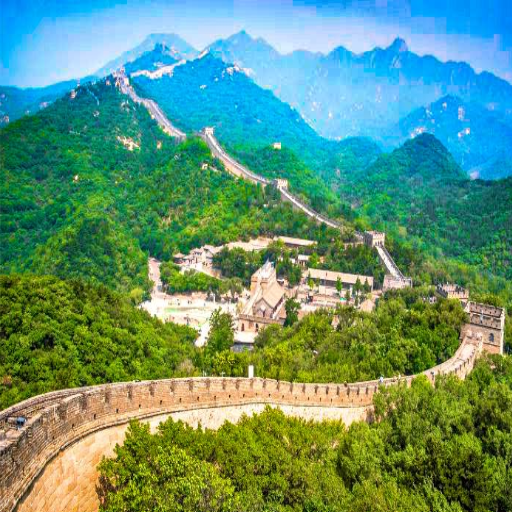
Visit the uncrowded Mutianyu section of the Great Wall
The Great Wall’s Mutianyu section integrates history, stunning views, and a peaceful escape compared to the more crowded Badaling region. Situated within picturesque forests and mountains, this section of the wall has been restored with new pathways that lessen its natural dangers while maintaining its beauty and history. Mutianyu is famous for its 23 unique watchtowers, which provide stunning views of the countryside.
Visitors may take a cable car to the wall for a more leisurely approach or hike up the stairs for a more physically challenging endeavor. There’s also a unique way of descending – via a toboggan slide, which adds a fun experience suitable for everyone. Since fewer visitors come to Mutianyu, it is easier to explore and admire the beauty of the Great Wall of China as a UNESCO site, which is perfect for those who prefer quiet without forgoing iconic adventures.
Explore the ancient villages that lie beyond the city center
Historically rich villages are the cultural and architectural gems hidden outside the bustling city center. Cuandixia is one of them. It is a lovely mountain village around 95 km from Beijing. Its stunning location has led to it being called the “Potala Palace of Beijing.” Cuandixia has preserved Qing Dynasty courtyard houses with carved windows and decorated doors. Its winding cobbled pathways are a time capsule for centuries-old rural life. Tourists can enjoy traditional cuisine at family-operated inns and admire the frescoes, as well as other ancient Chinese art buried deep in the homes.
One of the must-see places is Gubei Water Town, located next to Simatai Great Wall. Gubei Water Town is a picturesque village that blends authentic architecture from the Ming and Qing Dynasties with modern luxuries. You can enjoy the beautiful nature alongside the charm of the stone streets enhanced with red lanterns and arched bridges. Gubei Water Town is a wonderful place for photography enthusiasts as the village illuminates beautifully at night, with lights reflecting off the water. The nearby Simatai Great Wall is also a renowned historical attraction, allowing you to appreciate China’s history while exploring nature.
These two villages, Cuandixia and Gubei Water Town allow travelers to enjoy a peaceful getaway from the bustling city while appreciating the culture and diversity of China. These villages hold local festivals, traditional craft demonstrations, and interactive activities, which make them not only historical locations but vibrant communities ready for exploration.
Explore Further Scenic Hiking Trails Beyond Badaling.
If you are looking for hikes with panoramic views that escape the hustle and bustle of city life, the regions beyond Badaling offer some remarkable options. One of the best is the Huanghuacheng Water Great Wall hike, famed for its stunning scenery where portions of the Great Wall are submerged in a shimmering reservoir. This hike is a perfect commingle of an engineering wonder and a tranquil lake.
Another astonishing choice is the Jiankou Great Wall, famous for its steep climbs and rugged, unrestored charm. There is quite a balance of effort and reward regarding the stunning vistas. This is arguably one of the most spectacular places for thrill seekers and adventure lovers—the raw beauty of the Great Wall in its most ancient form. For more camp-friendly hiking, the Mutianyu section offers a great family-friendly option set in deep woods. It’s a definite favorite with a cable car and well-rebuilt structures in the area.
These hikes demonstrate the array of choices available beyond the busy Badaling area. You can learn history and enjoy nature all in one and come away feeling rejuvenated.
Where can I experience authentic Beijing cuisine beyond Wangfujing Snack Street?
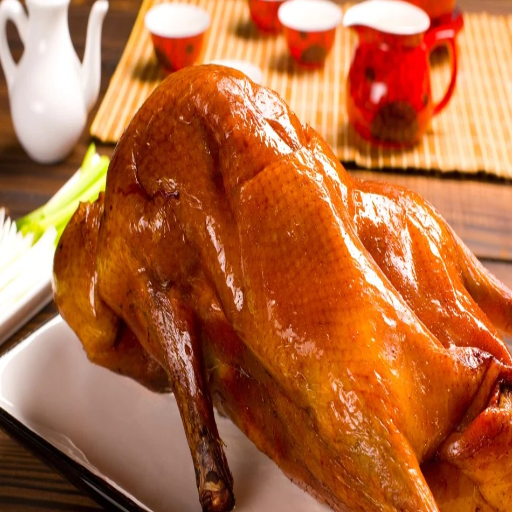
Locate the best Beijing roast duck that isn’t a tourist attraction.
To experience authentic Beijing roast duck away from the tourist spots, delve into the local districts and long-standing eateries that have been mastering this dish for centuries. A prime example is Siji Minfu Roast Duck Restaurant, which specializes in tender ducks. Locals are known to frequently praise its dishes, as it is common to find very crispy duck skin served with steamed pancakes and many other accompaniments. It is no surprise that they are often crafted with skill.
Another major establishment is DaDong Roast Duck, famous for its carefully balanced flavors. Unlike many other places aimed at tourists, DaDong embraces tradition while modernizing its approach to cooking. The restaurant uses less oil, creates a lighter cooking style, and focuses on the dining experience to capture the dish’s essence.
Ultimately, Quanjude’s Traditional Branches, especially away from the hustle and bustle of tourist spots, serve history and good cuisine due to their exquisite roasting techniques. These places have a more cozy setting, allowing customers to relish Beijing’s authentic pride in its culture.
Every one of these alternatives permits gastronomes to skip the overrun tourist pathways and experience Beijing roast duck in the places where patrons dine, allowing for an extraordinary meal in essence and skill.
Check out authentic street food in local night markets
Beijing’s food night markets are magnificent spectacles for food lovers looking for authentic food and experiencing local nightlife. The smell of grilled skewers, stir-fried noodles, and steamed dumplings permeates the Wangfujing Night Market. It is famous for its vibrant stalls, offering something for everyone, particularly fried insects and candied hawthorn. Similar to that is Donghuamen Night Market, which is well known for its colorful assortment of pancakes and sweetened rice cakes.
Besides providing a never-before-experienced culinary experience, these markets serve as a big reflection of the city’s culture itself. Proud of their craftsmanship, vendors work equally hard trying to get the very best out of their recipes, which are mostly inherited from other family members. Their spirit blended in the soothing yet vibrant atmosphere of the bustling Beijing crowds and vendors, making the experience truly unique. Visiting these night markets is truly unmatched for experiencing local customs, new cuisines, and the very heart of this vibrant food haven.
Visit classic teahouses in historic narrow alleys
Beijing’s hutongs are full of traditional teahouses that are peaceful respites. With the city’s fast-paced lifestyle, these teahouses provide a break where one can enjoy nature. They serve a purpose beyond just serving exquisite teas, as they are dynastic remnants of ancient civilization. It is at these places that visitors can experience aged customs flourishing in modern times. The pu-erh from Yunan and green tea from Hupeh become exquisitely grand when served in elegant, finely carved wooden furniture tins that radiance the deep-rooted heritage of China.
Besides the drinks, traditional teahouses can be characterized by their distinctive beverages and cultural offerings. They enable guests to witness the classical culture full of grace in living performances like Peking opera. They transport them back in time to teahouses where guests were served dainty and delectable delicacies and effortless stories full of history and grandeur. For sentence second to last: Each Peking opera attends complete and immersive sessions from noted experts, turning enigmatic history astounding and beautiful. This is akin to breaching the vitality of modern-day Beijing while enjoying the fine tea made using the ancient practices captured in the present.
What hidden historical sites in Beijing rival the Forbidden City and Temple of Heaven?
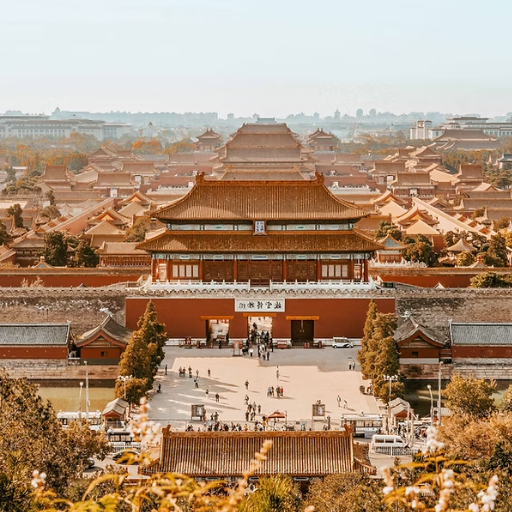
Discover lesser-known parks, palaces, and expansive halls
Beijing has many lesser-known hidden historical places. My top favorite, residing in the Xicheng District, is Prince Gong Mansion or Gongwangfu, as marvelous as the Temple of Heaven and the Forbidden City. This superb estate from the Qing dynasty featuring an imperial aristocracy tells surging stories of its richly preserved gardens, pavilions, and halls. During my visits, I’ve always felt a sense of timelessness when walking through the serene grounds as whispers of history echo through the intricate wood carvings and tranquil waterways.
Among the famous landmarks, Beihai Park is often overshadowed yet comes off as a highly well-known site packed with charm and historical significance. This imperial garden celebrates over a millennium of existence along with the stunning lake and White Dagoba that it is centered around. It is from this place that I remember the serene glimpses of exquisite Five-Dragon Pavilions, which appear to float delicately near the water’s edge and ponder in peace far away from overwhelming crowds of other attractions.
Finally, I want to mention the frequently forgotten Suzhou Street at the Summer Palace. Blending beauty with history, this charming spot, which reminds me of the southern China canal towns, is a treasure. It was constructed as an imperial shopping complex and remains today as a quiet reminder of the exquisite craftsmanship of Qing architecture. Such less famous sites reveal so much about the fascinating history of Beijing and often showcase just as much if not more, character than the well-known landmarks.
Don’t miss the undiscovered museums that aren’t the National Museum of China
The National Museum of China is an excellent source of culture and history, but so many quiet and hidden museums in Beijing share the same depth as the city. These lesser-known sites are intriguing and offer new perspectives into the city’s past. Capital Museum is one of my personal favorites. Located in a breathtaking new building, the museum is dedicated to preserving Beijing’s cultural heritage. It has an extensive collection of exhibits, including ancient pottery, ceremonial silk embroidery, and folk art. It is less crowded than most of the other tourist attractions in Beijing, making room for contemplation without the noise.
One of the coolest spots in Beijing is the Beijing Tap Water Museum, which is not only unique but also a hidden treasure. The exhibits capture every bit of history, ranging from the Imperial era to modern times, and tell the amazing story of water in relation to the city, which is very captivating to witness. The story of how water shaped the city alongside its growth is perfectly harmonious, and the exhibits are surprisingly interesting.
For a more unique experience, I suggest visiting the China Aviation Museum, located just outside the city’s core. The mountain views and the region’s rich history make it an exceptional site for tourists, making the displayed older planes far more appealing. Interacting with the not-very-popular museums in Beijing has significantly broadened my understanding and appreciation of the city’s rich history. The stories and perspectives I’ve encountered have been far beyond what larger institutions can provide.
Explore the historic city walls and gates of Beijing
Exploring the diverse and historic city walls and gates of Beijing gives insight into the city’s rich history and stern fortification during ancient times. A large part of Beijing’s natural tensor rest has been modified due to urban development. However, the wall and gate sections are still well preserved and offer intriguing tourist sites. Deshengmen Gate is one of the major tourist attractions showcasing China’s architectural brilliance during the Ming Dynasty and its engineering adroitness. It brought alive the pat of powerful and energetic trade and military folk who adventured through raw gates in ancient times.
The Yongdingmen Gate is another spectacular site famous for its historical beauty and significance. It is one of the most well-preserved structures in China, and the Kama Heart landmark connects contemporary China’s ancient and modern streets. These gates are remarkably famous worldwide for their epic history of warfare strategy and design mastery and their strategic and poetic location, which serves as an immense vantage point from the busy streets. Beijing mint on everyday visits this lieux takes in the depth and richness of surroundings, these sights are a stunning glimpse into life during the last medal.
Frequently Asked Questions (FAQs)
Q: What are some unique things to do in Beijing that most tourists don’t know about?
A: Besides the Forbidden City and Tiananmen Square, there are a lot of other places to visit in Beijing that are not as popular so that you can explore them without the large tourist crowds. Instead of the overly commercialized Badaling, see the less frequented Jiankou or Gubeikou sections of the Great Wall. Yuanmingyuan (Old Summer Palace) is less busy than the Summer Palace and still offers beautiful views. Stroll through the hutongs around Shichahai for a more authentic taste of the local culture. The Imperial College and Confucius Temple are great places to learn about the culture without masses of people. There are also many contemporary Chinese art exhibits at the 798 Art District, which you can visit at night to see the stunning lights around the city. These activities provide a more authentic experience in Beijing, away from tourist spots.
Q: What is the best time to visit Beijing to avoid crowds at the key attractions?
A: To strategically plan a vacation in Beijing while trying to avoid long queues, the best times are in spring (April-May) and autumn (September-October) during the weekdays. Domestic tourism peaks during summertime, and winters are the quietest yet frigid. To make the most out of your experience at must-do sites like the Great Wall of China or the Forbidden City, ensure you reach them during opening hours or after lunch (8:30 AM and 3:00 PM). Also, remember that stops like Tiananmen Square are better relayed during group tour breaks at lunchtime. Median Seasons offers excellent climate conditions alongside fewer tourists to ensure sightseeing is pleasant at the center of China’s cultural landmarks.
Q: Can any concealed portions of the Great Wall of China be accessed from Beijing?
A: Several sections of the wall are not as popular and accessible from Beijing, offering a more genuine experience. Jiankou is entirely wild and unrestored, amazing for aspiring photographers and hikers. Gubeikou holds some historical value as a military strategic point during the Ming Dynasty. Huanghuacheng has some portions of the wall underwater, giving it a different appeal. Jinshanling has magnificent views and is neither overly restored nor left in disrepair. These sections require advanced preparation but offer a restful getaway from crowded tourist areas. If traveling to the more secluded areas, consider a guided tour, as these parts can be challenging to navigate.
Q: What are the real hutong activities a visitor to Beijing must have in their itinerary?
A: While immersed in the hutongs of Beijing, do not forget to have tea in a courtyard home where the elders share tales of their life. In a cooking class, you will be taught how to make dumplings or noodles in the family’s kitchen. Nanluoguxiang Hutong is where modern cafes and boutiques meet traditional architecture. Grab a bike for yourself and ride through Beiluoguxiang to experience the daily life of the hutongs. Try to stop by in the evening, just when the residents come out and play chess or practice tai chi. The places surrounding the Bell and Drum Towers are also vivacious, combining ancient architecture and contemporary life. There are also numerous small eateries in family-style lodgings where one can savor real Peking ducks away from tourists’ eyes, making it an experience that one must have in Beijing.
Q: How can I experience Tiananmen Square beyond just taking photos?
A: For a fuller experience, go to Tiananmen Square before 8 am to hear the flag-raising ceremony (particularly stunning at sunrise). Take some time to go to the National Museum of China on the eastern side of the Square and check out the dazzling collections of Chinese artifacts from across the globe. Walk around the underground pathways that lead to the square and look for other vital places as they have nice exhibitions. Make sure to attend an audio-visual tour that recounts the historical events and political significance associated with the square. You can want to go to the square when its lights are on at night because the ambiance there is quite refreshing. A visit to Qianmen Street would also be ideal as it is located south of the Square. It is a restored commercial street from the Ming and Qing dynasties with many traditional shops and eateries.
Q: What distinguishes the Summer Palace from other places of interest in Beijing?
A: The Summer Palace is one of the best places to visit in Beijing because it is located atop 700+ acres of land that merges beautiful nature with well-crafted buildings. Unlike the Forbidden City’s oppressive structures, the Summer Palace features a massive 75% lake encompassed by the grounds, making the place a breath of fresh air from the busy Beijing city life. Tourists can take boat rides, walk through the longest painted corridor in the world (728 meters), and see the temples and pavilions on top of Longevity Hill. The palace helps us understand the life of emperors in China beyond just formal duties, showcasing leisure activities. UNESCO calls it “a masterpiece of Chinese landscape garden design,” so it is also registered as a World Heritage Site. To avoid being in congested areas, visit the palace during the midweek. Allow half of your day to marvel through this astounding imperial retreat that reigns over the other places of interest in the city.
Q: What are some must-do culinary experiences when you visit Beijing?
A: In Beijing, enjoy authentic Peking duck from places like Quanjude or Da Dong. Also, check out the night markets for street food such as scorpions and starfish and more traditional fare like jianbing, which are savory crepes. Attend a traditional teahouse for a ceremony that showcases Beijing’s tea culture, which has been around for hundreds of years. Candon – a cuisine known to have been served to emperors – can be sampled at restaurants such as Fangshan in Beihai Park. Other northern Chinese favorites are Zhejiang noodles, lamb hotpot, and Beijing yogurt. Family recipes passed down for years can be discovered through hutong food tours. Skipping these specialties in Beijing would mean missing an essential cultural aspect of the city. Many locals say that understanding Beijing’s cuisine is understanding the city’s soul.
Q: What lesser-known day trips from Beijing differ from the Great Wall?
A: Apart from the Great Wall, there are many enjoyable day trips from Beijing. The Western Qing Tombs are quieter than their eastern counterparts and have beautiful necropolises of Qing dynasty emperors. Gubei Water Town, an ancient town that has been rebuilt, is set against stunning mountains. The Lugou Bridge or Marco Polo Bridge is historically significant, with spectacular stone lion carvings. One of the oldest temples in Beijing is Tanzhe Temple, which is 1,700 years old. The Fragrant Hills Park has beautiful autumn leaves and some historical places. Yunju Temple is home to thousands of stone tablets with Buddhist scriptures engraved. These places give a glimpse of culture on the city’s outskirts while avoiding the heavy traffic of famous sightseeing places. The Eastern Qing Tombs have imperial graves with fewer tourists. These places have real cultural value.